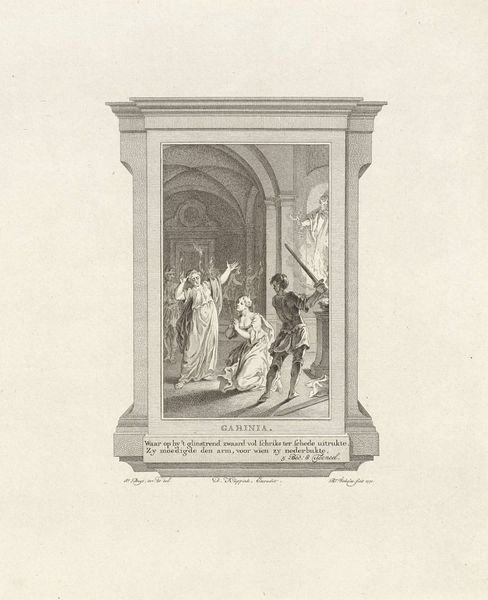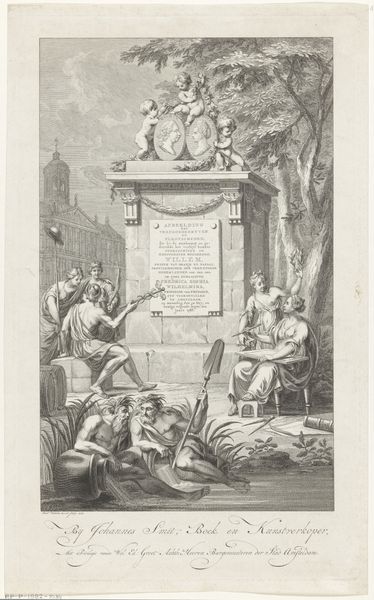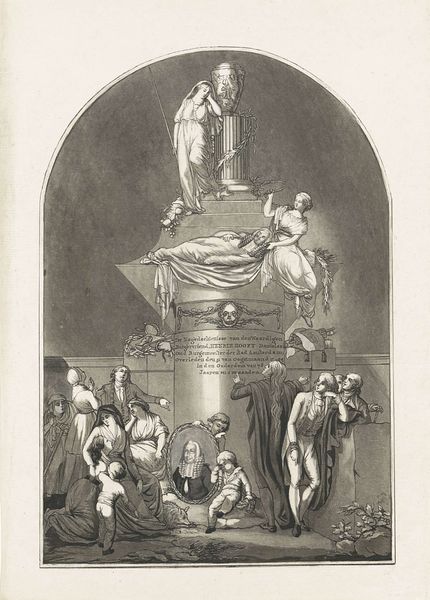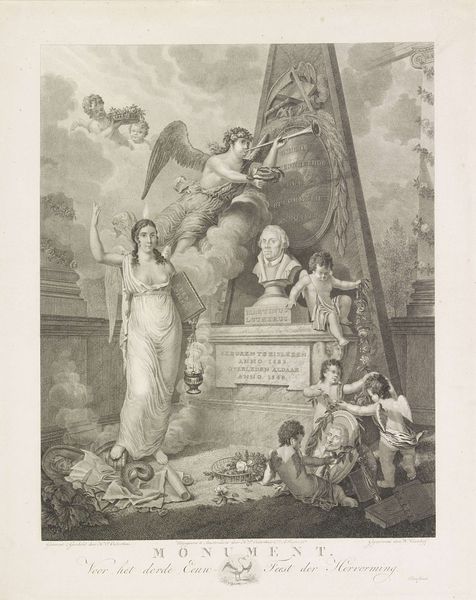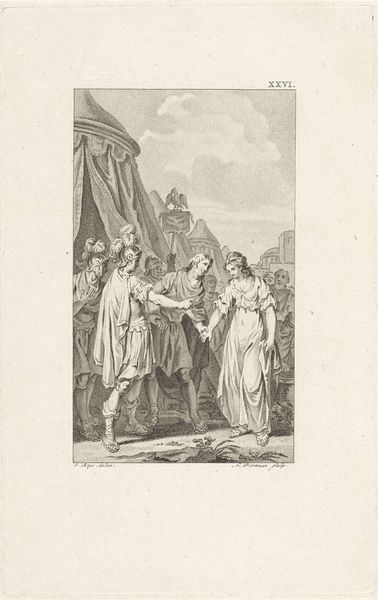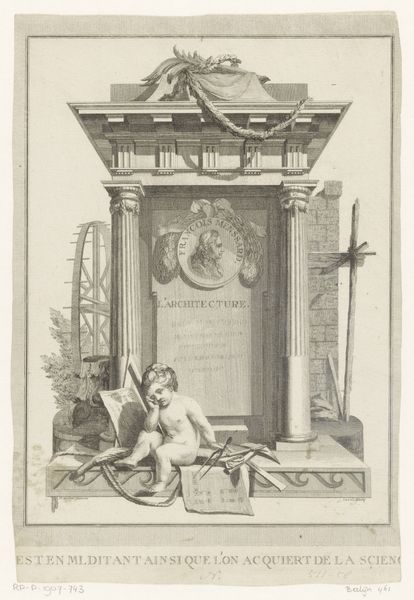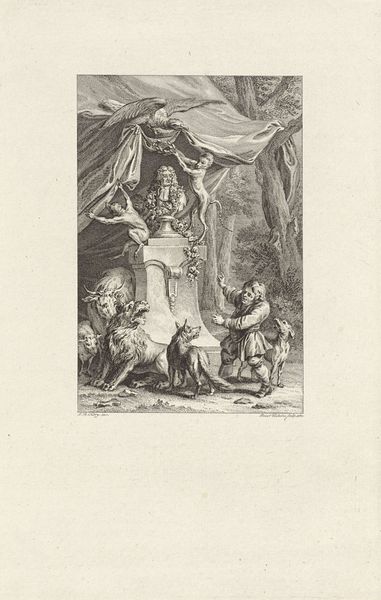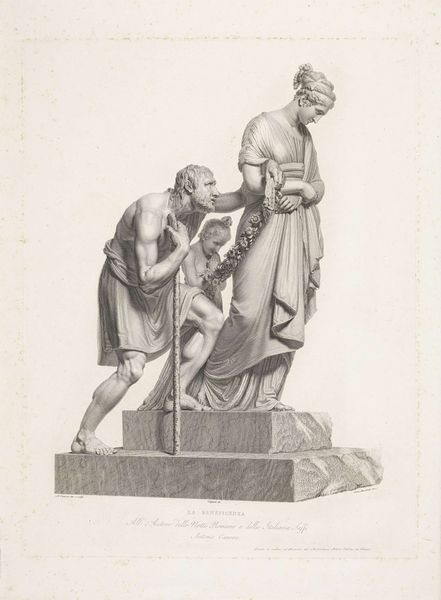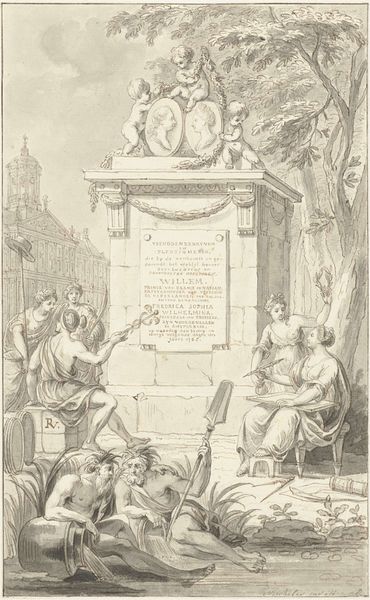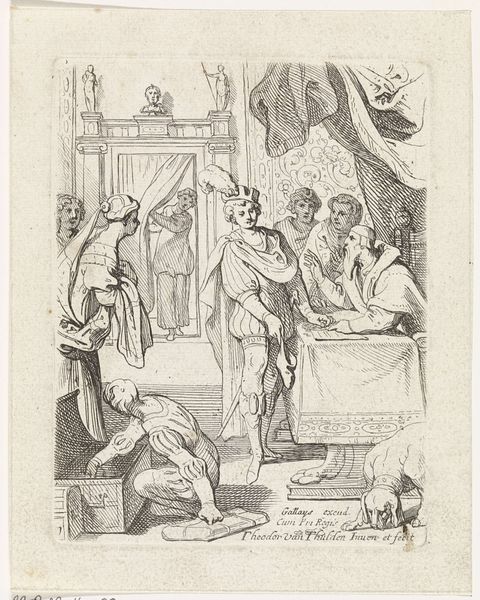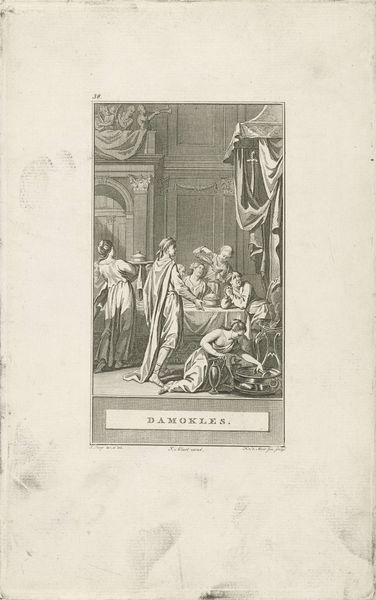
Allegorische voorstelling op het graf van Willem V, prins van Oranje-Nassau 1806 - 1808
0:00
0:00
reiniervinkeles
Rijksmuseum
engraving
#
portrait
#
neoclacissism
#
statue
#
aged paper
#
allegory
#
light coloured
#
personal sketchbook
#
old-timey
#
sketchbook drawing
#
history-painting
#
engraving
Dimensions: height 255 mm, width 165 mm
Copyright: Rijks Museum: Open Domain
Curator: This engraving, created by Reinier Vinkeles between 1806 and 1808, is titled "Allegorical Representation on the Grave of William V, Prince of Orange-Nassau." Editor: It feels austere, even with all the figures present. The greyscale lends a gravity that's hard to ignore. Curator: The neoclassicism here situates Willem V's legacy within the enlightenment ideals of order, reason, and civic virtue but it feels heavy. Who was benefitting from his death being commemorated in this way? It appears like his demise might be bolstering the position of elites after a time of great instability and societal questioning. Editor: What interests me most are the objects – the books, the scythe, the hourglass near a partially draped grave monument. Are those symbols related to Vinkeles' printing practices and the circulation of knowledge in that period? Death here appears not just allegorical but as an end to production itself, perhaps? Curator: Indeed. Time, mortality, knowledge, legacy - all rendered through these symbols surrounding William V's memorial. Notice how 'History', sits despondently with a volume and tablet while 'Death' itself is present with its implements. It really speaks to the fraught political situation surrounding the House of Orange at this moment in time. How history, is indeed, written by the victors. Editor: And who is benefiting? We can also look to materiality: The controlled lines of the engraving emphasize detail and craftsmanship. The artist has skillfully worked the copperplate, imbuing the artwork with social meaning and with a sense of permanence designed to memorialize a patron and family of patrons who are undergoing great social strife. Curator: The precision mirrors the desire for stability, but that precision might belie an underlying fragility within Dutch society at this moment. What we see represented isn't so cut and dry! It has consequences! Editor: An interesting paradox indeed! What's been unearthed today reflects on the processes and context used to shape history, as it speaks to the complex material layers behind one historical moment in Dutch culture. Curator: Right. Thinking about these competing representations prompts us to interrogate what truly underlies this particular era and how identity can be formed to shape national perception and power!
Comments
No comments
Be the first to comment and join the conversation on the ultimate creative platform.

